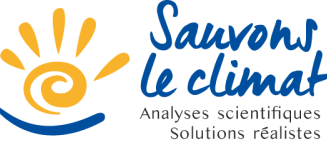When communication takes precedence over technology, or when the intermittent renewable stereotypes are used as a cloak of virtue and an advertising pitch
EDF is the official electricity supplier for the Paris 2024 Olympic Games. That’s logical, we may say.
"For us, it is a way of conveying the fact that EDF electricity is very low-carbon", says EDF. We can only concur.
"It is an opportunity to show that EDF is a major player in the production of renewable energies[1]", EDF continues: why not, we think. Further, EDF states it wants to "propose innovative solutions which could be reused to decarbonize the events sector,". Okay.
So, photovoltaic shadings equipped with flexible panels on the Olympic village (to supply 20% of the electricity consumed) or on the aqua center, why not; a floating solar installation on the Seine during the Games, as a showcase, well and good.
Our appraisal begins to waver, however, when the organizers boast that the Games will be powered 100%, i.e. at all times, with renewable electricity. In the EDF advertising film for the Olympic Games, the emphasis is on "energy that renews itself". EDF is thus set forth as "the official supplier of renewable electricity to Paris 2024": we are somewhat puzzled, but we assume that hydropower will be put forward.
To achieve its goal, we are told that EDF is counting on eight wind and solar farms[2] spread across the country. This is supposed to ensure that at least one site will be able to produce electricity "whatever the weather conditions[3]": the first tall tale we are asked to believe.
EDF announces that it has set up a series of measures to guarantee that the electricity consumed will actually come from these production sites, including specific origin certificates: a second tall tale for anyone familiar with the guarantee of origin system, which in fact guarantees nothing at all.
We are also told that a unique Trackelec traceability system will allow certification on an hour-by-hour basis. On the one hand, monitoring on an hourly basis is insufficient since the production- demand balance must be ensured at all times. On the other hand, why create such a complex system (!) when we have low-carbon electricity constantly available to us? This is poor pedagogy. The limits of the exercise are acknowledged, however, as we are told: "EDF estimates that it will be able to cover 80% of the Games' consumption with hourly concomitance[4]. " 80% is all very well, but it isn’t a guaranteed 100% renewable supply.
So, the country that provides Europe's most low-carbon electricity at all times, thanks to its nuclear power fleet and its hydroelectricity, is hiding behind the clichés of intermittent renewables as a cloak of virtue and an advertising argument.
It appears that when the Games were awarded, the renewable dimension was a sine qua non condition for being selected. Admittedly, even if the environmental impact of the Sochi or Beijing games, for example, was much less scrutinized. But why, in that case, didn't we revert, subsequently, to the low-carbon dimension which would have been more sensible and more in line with the challenge to the climate? Or, at the very least, why wasn’t the spotlight placed on carbon-free, reliable and dispatchable hydropower?
If the Games can and must be a showcase for French know-how, why not highlight this rather unique and fundamental asset in the fight against global warming: France's ability to provide everyone, everywhere and in all circumstances with low-carbon electricity, a model of what will be indispensable in the near future?
How could France and EDF have played this fool's game and missed such an opportunity to assert our excellence in the supply of low-carbon, reliable and dispatchable electricity? In the words of the EDF advertising slogan, it would have been the right way to "make the Games shine". Indeed, this is both a missed opportunity and a successful deception.
[1] La Tribune, March 5, 2024
[2] 6 wind farms (Bois-des-Barthes (Haute-Loire), Chemin-d’Ablis (Eure-et-Loir), Côte-de-Jade (Vendée), Fécamp (Seine-Maritime), Salles-Curan (Aveyron), Veulettes (Seine-Maritime) and 2 solar farms ( Lazer (Hautes-Alpes), Ottmarsheim (Haut-Rhin).
[3] Sport Stratégies March 8, 2024
[4] Capital March 6, 2024
Copyright © 2024 Association Sauvons Le Climat





